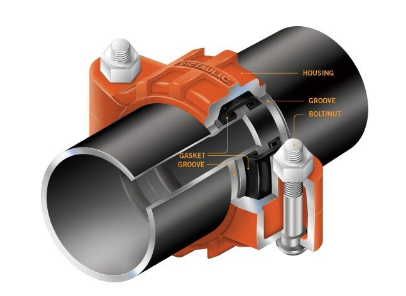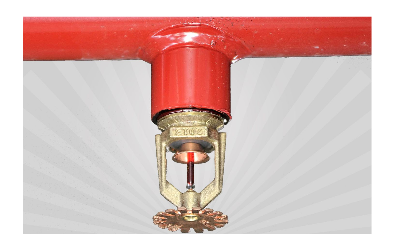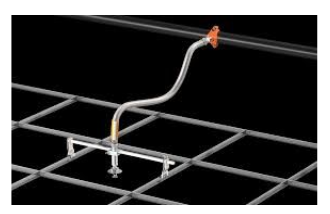ABSTRACT:
Every day the construction industry is looking for new ways to improve time efficiency and project profitability. Companies in the past have tried value engineering and schedule crashing to save time and money. As the industry continues to grow and innovate, new concepts are being applied.
Building Information Modeling (BIM) is one of these ideas that has made a large impact in the construction industry. BIM is a digital 3D modeling system that allows the user to create a complete rendering of a construction project complete with mechanical, electrical, and plumbing integrated into the model.
With this model a prospective contractor has the opportunity to prefabricate aspects of their project in a shop to later be installed on site more efficiently and with less labor necessary than if completely field fabricated.
The fire sprinkler contractor JR Wagner Fire Protection has recently integrated prefabrication as a possible project delivery method for several of their recent projects. Possible benefits from their integration include reduction in project cost and shorter project schedule leading to greater company profitability and efficiency.
SNIPPETS:
Innovations:
Since inception, the fire sprinkler industry has changed drastically in its laws and codes but little change has occurred in the area of assembly. For the most part they still spray water from sprinkler heads set high in the ceiling. Some innovations have occurred though in the assembly of the fire sprinklers plumbing connections. For instance originally the industry threaded every pipe and used threaded connections.
Prefabrication:
Innovations such as rigid couplings over threaded pipe have been integral parts in improving efficiencies in schedule and cost in fire sprinkler construction. As time has continued the construction industry as a whole will always continue to find new and innovative ways to improve even further its project efficiency.
Today, technology is becoming ever more interactive with the construction industry. The implication of the 3D building Information Modeling (BIM) have provided the industry with many avenues for new grounds of innovation.
METHODOLOGY
The methodology I primarily have chosen in this case study is an analysis of quantitative data taken from a project previously completed by JR Wagner. As well, I included qualitative data I received through interviewing the owner and senior project manager of JR Wagner Fire Protection regarding how he feels regarding the integrations to his building process.
My objective for this case study is to…
- Extend the overall knowledge of prefabrication in the fire sprinkler industry.
- Analyze the benefits of prefabrication for the JP Wagner Fire Protection Company.
- With my analysis I hope other companies investigating the benefits of prefabrication can review my work to help them make informed decisions on how they can improve their own productivity and profitability.
- To shine light on how a industry feels about the integration of prefabrication to the construction process
CASE STUDY:
JR Wagner Fire Protection is a fire sprinkler contractor located in Modesto, CA. They service the San FranciscoBay Area, California Central Coast and California Central Valley. The company was established in 2010 by Jon Wagner, who began working as a tradesman in the fire sprinkler union in 1998. After nearly 12 years in the industry Jon started his own company. Early on, Jon’s tradesman all used threaded pipe and twisted on every cap, elbow and fitting.
Project Specifics:
The data I received from J.R Wagner Fire Protection are two project bids that have been complete for a fire station recently built in Livermore, California. The fire station is located at 1919 Cordoba Street, Livermore and is adjacent to the current fire station which has stood since 1976.
Data Analysis:
In both bids there are several notable similarities and differences essential in accurately assessing the value of prefabrication over field fabrication. For both field fabrication and prefabrication the rates for the installation man hours are the same $90 + $50 per hour. This is because for every journeyman on site who is bid at $90 an hour there is an apprentice working along side him who gets costed at $50 an hour.
Further Innovation of Prefabrication:
As innovation seems to never sleep in the construction industry there are several future advances to be expected in the fire sprinkler industry. One innovation picking up speed is the use of flexible hose attachments for the heads of the fire sprinklers.
CONCLUSION:
Since John Carey’s patent in 1806 for a perforated pipe used for fire suppression the fire sprinkler industry has innovated and evolved exponentially with never losing its original guidelines to save lives.
Now as the construction industry has innovated with new innovations such as BIM which allow for better communication between the respective trades. Companies have the ability to evolve and integrate new project delivery methods such as prefabrication to their respective projects.
J.R Wagner Fire Protection now has the opportunity to streamline their construction process with the integration of prefabrication allowing their work to be completed cheaper as well as faster. For example the Livermore fire station had a $10,200 reduction in cost with the prefabrication bid nearly 27% less than the field fabrication bid.
Understand prefabrication is not effective for all projects, proper planning and site conditions are particular aspects that are necessary for prefabrication to be an effective project delivery system. Although when conditions are acceptable prefabrication is a great delivery method to lower cost and increase schedule efficiency.
Now there are new ways to even further project efficiencies such as with flexible hose attachments and use of Halogen gas rather than water for extinguishing fires. Of course in the future there will be other possible methods to increase efficiency and profitability because innovation never sleeps.
Source: California Polytechnic State University
Author: Matt Fisher


